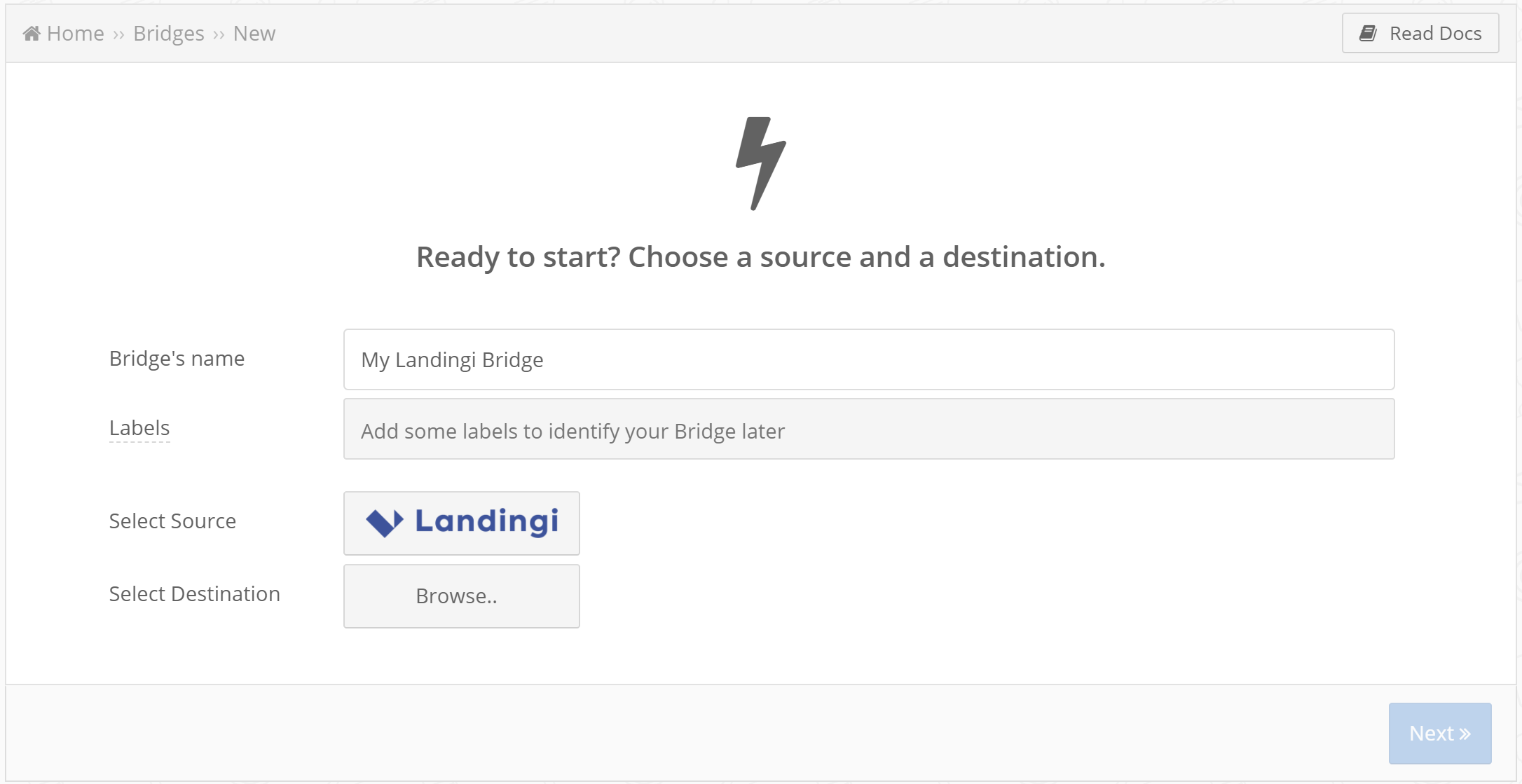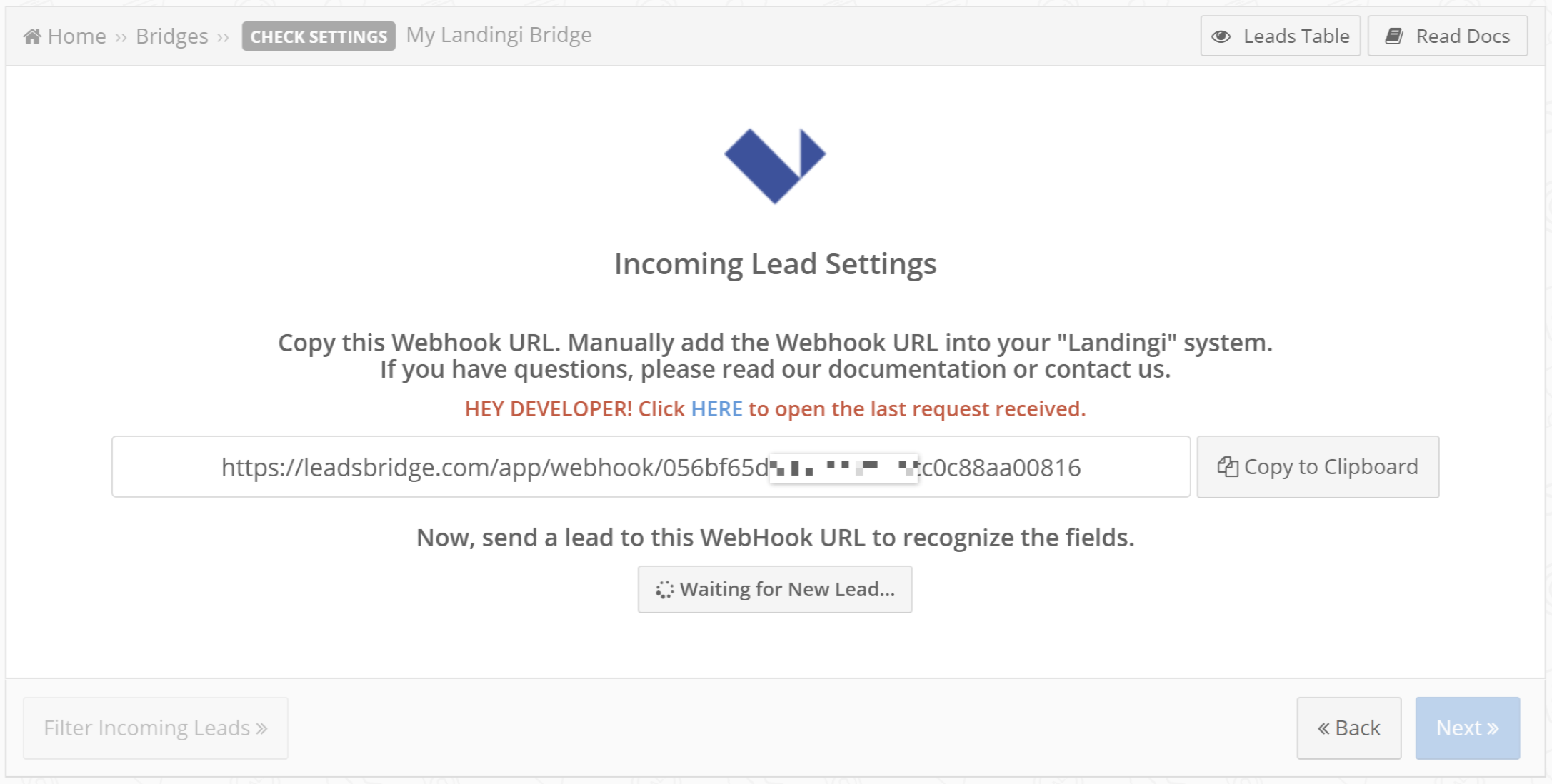Connect Landingi to LinkedIn Matched Audiences with LeadsBridge
 →
→ 
This article is a simple guide on how to set up the bridge and connect Landingi to LinkedIn Matched Audiences.
You can watch the video or follow the step-by-step below.
Video
Automatically sync the Audience with LeadsBridge
Learn how to create and automatically feed the LinkedIn Matched Audiences with LeadsBridge. Some steps may vary upon each integration; if you have any doubt about the steps you should take for Landingi, please follow the written information below.
Manually create the Audience (LinkedIn)
You may always upload the CSV manually to create the Audience on LinkedIn. Please note, the LinkedIn Matched Audiences will not be fed automatically as with the LeadsBridge solution.
Add the LinkedIn Ad Account first
If you have already connected your LinkedIn Ad Account, skip this part and head to the next step.
- Head over to the left sidebar and click on LinkedIn Suite.
- Click Members.
- Click on Add New to connect the Ad Account.
- A LinkedIn screen will ask you to login with the account you'd like to use.
- Authorize LeadsBridge to access to your LinkedIn Ad Account information.
- Once done, you'll be taken back to the LeadsBridge app.
How to set up the bridge step-by-step tutorial
Before you start
- Head over to the left sidebar and click on LinkedIn Suite.
- Click LinkedIn Matched Audiences.
- You'll be taken to the LinkedIn Matched Audiences section of your account.
- Click on Add New.
- You'll be taken to the first step of the bridge creation.
Step 1: Account destination
- Select the LinkedIn Ad Account you want to assign the LinkedIn Matched Audiences.
- Click Next.
Step 2: Choose your LinkedIn Matched Audiences settings
- Pick an existing Custom Audience or choose to create a new one from the drop-down.
- In case of a new one, enter the name for your LinkedIn Matched Audiences (this will be visible inside your Ad Account).
- Select if you'd like to target Contacts or Companies as Type.
- Add some labels to identify your bridge later in LeadsBridge.
- For new audience, select if you'd like to include the Lifetime Value to create better-performing lookalikes.
- Click Next.
Step 3: Setup your Landingi source
- Choose Landingi as source of your contacts.
- Select to use an existing integration or to create a new one.
- Click Next.
You may skip the integration part if your integration has been already configured.
Integrate Landingi with LeadsBridge
- Type in the name you'd like to call your integration to recognize it later.
- Enter Webhook to connect your Landingi with LeadsBridge.
- Landingi gives the possibility to send lead’s information to a Webhook URL, this is set up in the form settings. Create the bridge and select Landingi as Source. In the source step, you’ll see a URL address, set that endpoint as the data receiver inside your Landingi form settings.
![]()
- Set the Webhook with lead information in a form by following the steps below:
- Log in to your account in the Landingi platform. Then go to editing the selected landing page.
- In the editor, go to form settings. On the left, enter the Integrations and choose integration with Webhook.
- In the Request URL field, paste the URL provided by LeadsBrdige during the Bridge creation.
- In the Request method field, select POST.
- Map the Landingi form fields with the fields that you would like to receive in LeadsBridge.
- In the Request Headers fields, set the request headers that will be sent each time the form is sent. Remember that each heading consists of two parts: key and value, e.g. API_KEY: 1234-abcd-5678, where the first field concerns key and the second - value.
- In the Request parameters fields you can set additional parameters that will be sent together with the form. Similarly to headers, it consists of two parts: key and value, which should be completed. For example, if we have a form with an email field and we set one parameter source:landingi, then each time someone sends this form, the query will send data to the API: email: marta@test.com (or what the user enters in the form) and source: Landingi. The request parameters perform almost the same function as the hidden fields in the form, but their advantage is that they are invisible from the page code.
- Click Next.

Contacts segmentation
- Select the segment you'd like to use as the source for your contacts.
- You may also add filter conditions by clicking the Source Filter button:
- Add conditions to filter contacts and tailor specific segments.
- Remember that source data will be processed only when all conditions added are met.
Fields Mapping
Here you can map your Landingi information with your destination fields.
You'll see a field name with the destination integration's logo at the top, this indicates the name of the field on LinkedIn Matched Audiences.
Underneath there's a box where you may add the information you'd like to send.
- Check each of the LinkedIn Matched Audiences fields available and match the data you wish to sync from Landingi.
- Map as many fields as possible to achieve higher performing data matching to people on LinkedIn.
- Email and Phone can accept up to 3 values, thus allowing to create better-performing retargeting.
- Static values can be added only for Country Code, Gender and U.S. State fields.
- You may also leave blank the box of a field's information you don't want to send through.
Custom Fields
Adding more information is simple and straightforward:
- Head over the "Would you like to add more information?" box at the bottom of the page.
- Select the field you'd like to add from the dropdown list.
- Click the Map this field button.
- The field will appear above.
- Add the desired information, as you did with the other ones.
Once accomplished your desired outcome, click Next.
Audience Sources
Here you can Edit the source created, Delete it or Add Another Source to combine different sources into your LinkedIn Matched Audiences.
If you'd like to add other source data, please click Add Another Source and repeat the Step 3 to setup your new source.
Once done, click Next and head to the last step.
Step 4: Summary
- Before proceeding, please check the information recap.
- Choose if you'd like to run a Simulation or you're ready to go Live.
- Simulation mode provides you with the opportunity to elaborate source data excluding the data sync process. The outcome is a report in order to verify the information processed.
- Live mode process source data and sync information with LinkedIn Matched Audiences as the outcome. Activate this when you're ready to go live.
That's all! Congratulations.
Your bridge will now start the sync process to gather all the information. Once ready, it will be synced and updated automatically.
Related Articles
If you have any other questions, or need help to configure your bridge from Landingi to LinkedIn Matched Audiences with LeadsBridge, do not hesitate to contact our Support!



